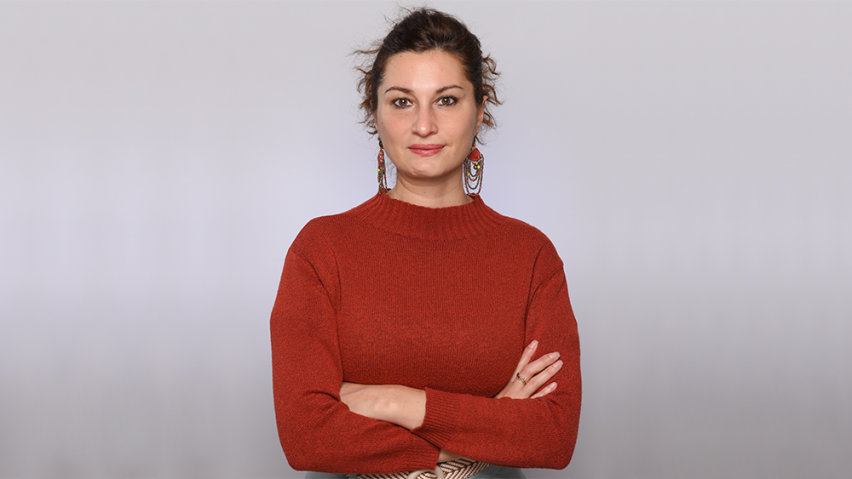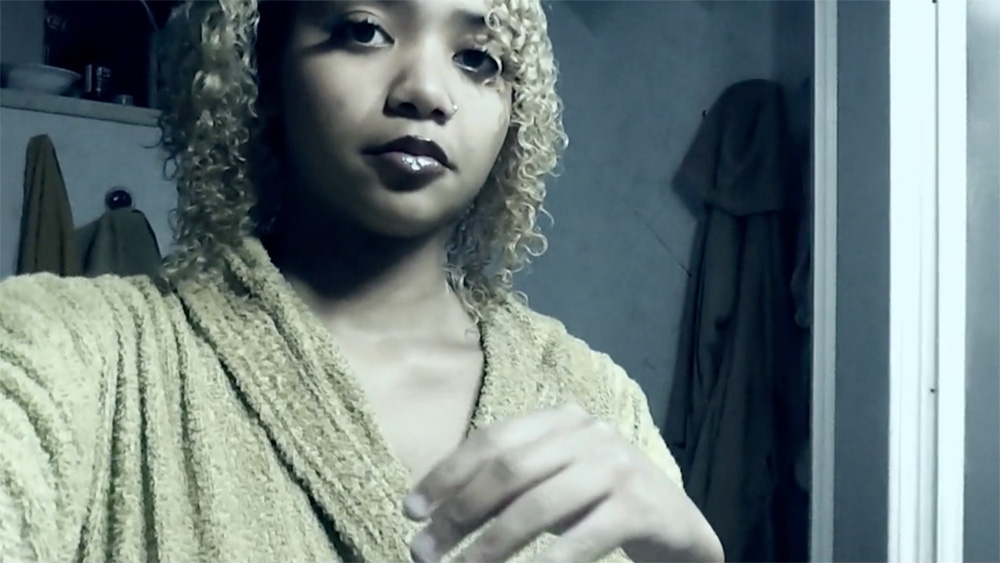“My film talks about the invisible boundaries of the city”
 Privat
Privat
Scientist and Filmmaker Dr. Paola Piscitelli was funded by DAAD via the PRIME funding programme.
Dr. Paola Piscitelli, a lecturer in earth system science at the University of Hamburg, wanted to take a closer look at the situation of marginalised young people in Naples and Johannesburg. The result of her work is a film, produced in collaboration with young people in Naples. Her project was supported by the DAAD funding programme, Postdoctoral Researchers International Mobility Experience (PRIME). DAAD News talked to the scientist about her documentary.
Dr. Piscitelli, what is your film “Io non vedo il mare” about?
In my film, I tell the story of marginalised young people in Naples, who came together for the first time during the coronavirus pandemic to write a letter to the city of Naples. The result is a mosaic of small, fantastical, irreverent autobiographical accounts, almost paradoxical in nature, which project a potentially different story that we as observers can rewrite. In English, the Italian title means “I don’t see the sea”. This phrase comes from a project participant who is one of those young people that doesn’t speak much due to speech and social difficulties, but when they do, always hit exactly the right nerve. I believe that this phrase expresses precisely what is happening in Naples: in the capital of the Mediterranean, the sea – which represents openness, freedom and emancipation – marks the real boundary between those who achieve all that, and those who don’t make it and are forced to leave, or struggle to stay. In my film, I wanted to tell the story of these invisible boundaries within the city.
How did you get the idea to make a film about the situation of marginalised young people in Naples?
The film was recorded entirely in Naples, but originates in Johannesburg, South Africa, where it was first going to be shown. Then the pandemic forced me to change my filming schedule and location. It turned out to be a happy accident, because it became clear to me that there was a connection between Johannesburg (the research location for my doctorate) and Naples that I had not yet recognised in my earlier studies. Both are metropolises of what is known as the “Global South”, which have not only experienced colonisation, but in recent years, racism and xenophobia as well. Naples is at the centre of a region that was marked by a series of disturbing events in the 2010s, such as the massacre of Castel Volturno in 2008, violence against Africans in Pianura in 2009, or the violent attacks against Roma in Ponticelli in 2011 – all signs of xenophobia that goes hand in hand with the development of the city into a settlement area for migrants. It was important to me to tell these stories – or, to be precise, for them to be told by young people who have experienced racism and violence themselves. At the same time, I wanted to create a portrayal that breaks away from the definition of marginalisation by showing how much these young people represent the future, beyond just the rhetoric – due to the wealth of their experiences, their depth of thought, and their energy.
Video: „Io non vedo il mare“

To play video, please click on image. Please note video host will have access to data.
What is the message of your film?
I collected and compiled the messages that are conveyed directly by the subjects. In actual fact, they are not messages, but authentic questions that are not being asked in politics: What is family and how has is changed? What does safety really mean? But also: why are people racist and then go in the sun to darken their skin? All these are questions that, as a whole, could yield a manifesto. I have tried to make them sound like a chorus that asks questions of the audience and hopefully triggers emotional reactions, be it indignation, compassion or tenderness. If I had to pick out a single message, then I would say that it lies in the practice of what we have attempted: making this film together in such a crazy way, at the least convenient time, and enabling encounters precisely when it seemed impossible.
How did you do it?
The film is the result of my work at the interface of city research, social art and filmmaking. My research questions were: what are the (visible and invisible) boundaries of Naples? Which city do they define or deny? And how are new generations trying to renegotiate their right to the city? From the very beginning, it was clear to me that I wanted to incorporate the young people’s point of view and portray their perspective of the visible and invisible boundaries within the city, which consist of discrimination, racism, unspoken violence, social barriers and lack of opportunities. I read everything that has been published on migrant communities and new generations in the last ten years. Then I transferred all this into a dossier and tried to develop a visual language for it. I developed a workshop concept with the aim of performatively showcasing what has already been discovered in the scientific literature by talking and playing with the young people. Then I started to look for participants and put together a team.
Who did you work with in your team, and how?
The team consisted of 23 young participants aged 16 to 24, an educator who is responsible for the subject of socio-psychological threats to migrant youth in a major Neapolitan NGO, two experts in libertarian pedagogy and the founders of an organisation that works with Roma in the district of Scampia. In addition, we were joined by a video specialist and sound technician, accompanied by photographers and writers. We started to meet in every possible way, first online and then in person, at the invitation of the Museo MADRE, a very important Neapolitan museum for contemporary art. We could never have done it without the support of the museum and especially of the director at that time, Laura Valente, who believed in the project from the very start and helped make it happen. From December 2020 to March 2021, we met almost every week for activities such as collective and emotional mapping, theatre games, personal accounts and filmmaking. During the personal accounts phase, the young participants wrote diaries, which served as the basis for the micro-stories in the film, and recorded them independently of each other using a phone camera that was bought for the group. The entire film was a big group project.
How did the PRIME stipend help you?
The funding from DAAD was absolutely essential to the project. The stipend enabled me to concentrate fully on my work. The fact that I was being supported by such a distinguished foreign institution also helped me to introduce myself in Naples and made it easier to build up a network. What’s more, the staff at DAAD were very flexible at adjusting the funding, because things were constantly changing during the course of the project. That was critical to its success.
Interview: Britta Hecker/Sabine Moser (16 February 2023)
About
Dr. Paola Piscitelli describes herself as a researcher, ethnographer and traveller. She acquired her doctorate in the field of city planning, following extended field research trips in sub-Saharan Africa. While studying for her doctorate, she began to explore other artistic methods and languages for her scientific research. Her goal is to create an interface between city research and documentary film, as well as producing experimental films about questions of human coexistence in urban areas.
Further information
The DAAD PRIME programme has been funding temporary positions at German universities to support the international mobility of postdocs since 2014. Postdoctoral researchers who intend to pursue their careers in Germany, receive an 18-month-appointment at a German university, including a yearlong research stay abroad. Applicants for the programme must have above-average qualifications; the success rate is below 20%. There are no restrictions regarding research field, nationality or current place of residence.